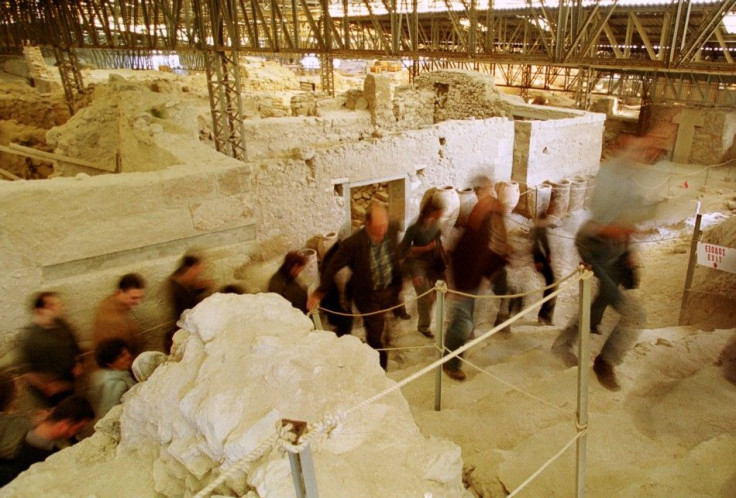Pre-Historic, Buried City Of Akrotiri On Greek Island Reopened For Tourists

After an unprecedented closure for seven years, the prehistoric city of Akrotiri, located at the volcanic cycladic island of Santorini in Greece, was reopened for tourists Wednesday.
The Greek Minister of Culture and Tourism Pavlos Geroulanos announced the opening of the archaeological site following his visit to Akrotiri.
Today reopens to the public an archaeological site of global concern. Those who were lucky enough to visit the cape earlier remained speechless in front of the richness and beauty of the findings, Geroulanos said in a statement.
The site was closed since 2005 after a roof structure, which was being constructed to protect the site, collapsed, killing a British tourist.
Geroulanos said that since the safety of visitors was a top priority, the cultural ministry has done all safety tests before opening the site to the public.
We are now able to say that the thousands of visitors to the site can enjoy safely.
According to the ministry of Greek culture and tourism, Akrotiri is one of the most important prehistoric settlements of the Aegean with first habitation at the site traced back to the Late Neolithic times around 4th millennium BC. By the start of the Late Bronze Age some 3700 years ago, Akrotiri served as a major urban center and port city of the Aegean.
Located on the popular tourist island of Santorini in the southern Aegean Sea, off southeast of Greece's mainland, the city of Akrotiri was buried under the pumice and ash from the eruption of the Santorini volcano in 1700 BC, just like in Pompei.
However, unlike Pompei, the inhabitants were able to abandon the city much before the eruption as a result of a series of earthquakes that happened before the eruption.
The volcanic materials that covered the entire town have eventually protected the buildings and their contents till date. There are three-and-four storey buildings that are still intact, with well-preserved murals, frescoes, wall paintings and objects such as furniture pieces and vessels inside them.
The artifacts excavated from Akrotiri, one of the leading archaeological sites of Greece, are displayed at the new museum of Prehistoric Thera at Santorini.
© Copyright IBTimes 2024. All rights reserved.











